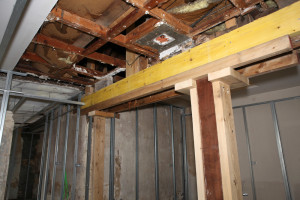Will homeowners insurance cover termite damage?

According to experts, termites create $30 billion worth of damage every year in the United States with the average bill for a homeowner running around $3,000 and your homeowners insurance is not coming to the rescue on this one.
Imagine this:
You come home one day from work to find a large portion of your living room ceiling lying on the floor. After an inspection from a contractor you learn that a very important structural beam has collapsed bringing down the ceiling supports that were attached to it.
Now the bad news, all of this damage was caused by a tiny little bug about 6-7 mm in size. It turns out you have termites and unfortunately, the majority of the repair bill is coming out of your pocket.
Termites can be a nightmare of a problem and are capable of serious damage. According to experts, termites create $30 billion worth of damage every year in the United States with the average bill for a homeowner running around $3,000 and your homeowners insurance is not coming to the rescue on this one.
Infestations considered home maintenance
Pest infestations and the damage they do are considered maintenance issues by home insurers, and are therefore not covered by your policy. Basically, your insurance company is saying that all of this termite damage could have been prevented with proper maintenance and regular inspections of your house which means that you will be on the hook for the repairs, not your insurance company.
Homeowners insurance only covers “sudden and accidental” incidents such as broken pipes or tree branches that suddenly break off and crash through your roof. Termite infestations can take months or years to cause serious damage so your insurer is going to argue that you could have prevented this damage if your home had been inspected regularly.
While the cost of that major structural beam is not covered, you may be able to get your insurer to cough up for some of the other damage. If that beam dragged down attached supports which caused your ceiling and roof to collapse that damage would be considered “sudden and accidental” and would be covered.
Termites are just one pest on an ever growing list of policy exclusions so be sure that you read and understand your homeowners policy in regards to what is not covered and have your home inspected on a regular basis.
Everything you need to know about termites
These tiny creatures live in colonies with several hundred bugs to several million. They love to munch on cellulose-based products such as wood, insulation, paper or plant debris. Given enough time they can do a huge amount of damage.
Here are a few tips on how to avoid termite infestations:
- If you live in an area where termites are common be sure to use concrete that is resistant to termites in the foundation of your home.
- When building a new house put in poisoned physical barriers such as plastics. This will make sure there is no easy way for termites to get in the house.
- Have any at-risk timber properly treated with chemicals.
- Monitor the roofing vents, foundation of the house, siding as well as all windows on a regular basis.
- Check the ground clearance between the ground surrounding your house and the siding. If the distance is too small it may result in infestation as any wood making contact with the ground gives the termites a way into the house.
Termite Bonds
If you live in a section of the country that is partial to high levels of termites you may want to consider purchasing a termite bond. This is like “termite damage insurance.”
It is a contract between you and a termite control company that basically says they will provide regular inspections and treatment for termites.
If an infestation would occur the termite company would be on the hook for the damages. These contracts do have exclusions in regards to the type of termites covered so make sure you have a complete understanding of the agreement.
